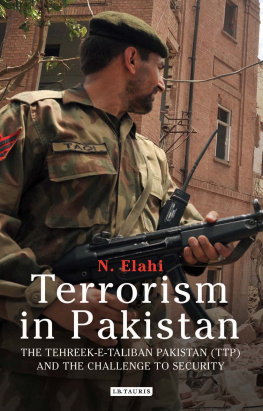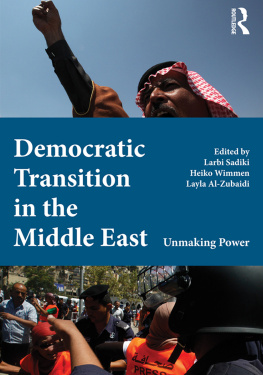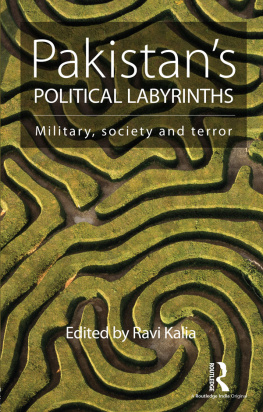Table of Contents

The Fractious Path
Pakistans Democratic Transition
RAZA RUMI

HarperCollins Publishers India
Dedicated to
Sabeen Mahmud
Contents
This book is a collection of commentaries that appeared in the Pakistani weekly The News on Sunday during the years 2008-2013. I had been writing in the media since 2005, but it was only in late 2008 that I turned to journalism full-time. During this time, I was Features and News Editor at the weekly The Friday Times, and a columnist for The News and Express Tribune among others. In 2013, I started to host a television current affairs show as well. Sadly, that came to an end in April 2014 when I left the country after escaping an assassination attempt that killed my colleague.
I am aware that there are multiple challenges to publishing an anthology of news commentaries. First, they have lost their immediate relevance. Second, unlike an integrated narrative, the readers attention is called to focus on disparate topics. Yet, in the case of Pakistans most recent transition to a democracy, I saw true value in collecting an on-the-ground report of the times, both for immediacy and accuracy. Contrary to the global perceptions of Pakistan being a failed, failing, martial, warrior or terrorist state, these commentaries testify to the diversity and intense struggle of its politicians and civil society to re-orient the countrys present and its future.
Since its inception, Pakistan has oscillated between authoritarian and democratic spells. The civil-military bureaucracy has directly governed the country for more than three decades and the brief periods of democratic rule were turbulent, with civilians enjoying limited powers, given the overarching powers of the unelected institutions.
The years 2008-2013 were a departure from the earlier trends. While the control of the military over key policy areas was intact, Pakistan did inch forward towards a democratic culture, with unprecedented media freedoms, an assertive judiciary and a reformist parliament. The countrys geographical location and the war on terror in its neighbourhood impeded the path towards political stability as the quest for security remained the prime concern of the state.
Prior to the democratic transition of 2008, Pakistan underwent a series of traumatic events. In March 2007, General Musharraf fired the chief justice that triggered a lawyers movement, soon joined by the civil society and the media. The supreme court restored the top judge and a new phase of confrontation between the executive and the judiciary started which led to the second martial law or emergency by the General in November 2007. Musharraf had reached an understanding with Benazir Bhutto, the leader of Pakistan Peoples Party, who ended her decade-long exile and returned to Pakistan in October of the same year. Most significantly, Musharraf was engaged in backchannel negotiations with India towards a realistic settlement on the Kashmir issue. The domestic instability in Pakistan weakened Musharraf; it is said that his Chief of Intelligence General Kayani was not averse to Musharrafs ouster.
In a tragic development Benazir Bhutto was killed in December 2007, ostensibly by Islamic extremists. The elections were postponed for a month and were held in February 2008 in a climate of uncertainty and national mourning.
The elections resulted in the victory of Pakistan Peoples Party and it formed a coalition government with other political parties. Initially, Nawaz Sharifs party was also a part of the coalition, but that was a short-lived alliance. The allies split over the issue of restoring the chief justice who had been suspended for the second time by Musharraf.
For the next five years, the civilian forces in the parliament and the presidency under Asif Ali Zardari, widower of Bhutto, struggled with the military-dominated state to assert their power. The net result of this continuous power struggle was an increased civilian space in Pakistan. It increased provincial autonomy, thereby addressing the historically problematic issue of federalism.
Pakistans lovehate relationship with the United States worsened during this period. The year 2011 was perhaps the worst in a decade-old partnership between the two countries. India-Pakistan relations hit a new low with Pakistan-based jihadists attacking Mumbai in November 2011, and it took a few years for the two states to resume diplomatic engagement.
Yet, within Pakistan, an emerging middle-class voice was beginning to express its discontent. This was best articulated through the powerful electronic media and the rise of cricketer-turned-politician Imran Khans party. By 2013, Khan had begun to challenge the established players and his party made considerable gains in 2013.
The issue of Pakistans identity remains unresolved. Over the decades, it has turned into a hybrid theocracy. This is not a simple outcome of the countrys creation in the name of religion, but a conscious choice of its mostly secular rulers to exploit religion for both nation building and power maximization. With the opening of some democratic space, there were intense debates about the direction Pakistan should take. Some of these public battles resulted in violence the most notable case was Punjab Governor, Salmaan Taseer, being gunned down for his call to amend the blasphemy law. Similarly, a Christian minister, Shahbaz Bhatti, was also killed by the Taliban for the same reason. These incidents only further served to highlight the fact that leaders like Taseer and Bhatti represent the views of a sizeable number of people, many of them devout Muslims, who resent intolerance and religious violence.
This period also saw the rise of the Pakistani Taliban and sectarian militias that target minority sects such as Shias, Ahmadis and non-Muslims. The military cleared out several areas that fell to the Taliban, but it was not ready until 2014 for an all-out operation against the militants havens in the country. In part, this was due to the historical relationship between the security establishment and the jihad groups for strategic space in Afghanistan and keeping Indian hegemony under check. But the price of these policies was paid by more than 50,000 Pakistanis who were killed across the country. The fragmentation of militias and some of them turning rogue resulted in increased attacks on the Pakistani state itself. The military suffered losses as the militias attacked soldiers and installations across the country. Since 2014, Pakistan has been struggling to change its course vis--vis the militias as the cost of its policy of inaction proved to be too high.
Despite their failures and charges of corruption, the major parties collaborated on key governance reforms, avoided playing the game of the military unlike the decade of the 1990s and vowed to let the system function according to constitutional parameters. This increased assertion of civilian authority was one of the reasons why the 2013 elections were held on time and the government completed its full term. Consequently, a peaceful transfer of power from one democratic government to another took place. This, by itself, is no mean achievement in the history of Pakistan.
I hope that students of Pakistan and South Asia, and lay readers will find this collection useful. Any mistakes and errors of analysis are solely mine.

Pakistans political trajectory is a tale of instability and repeated interruptions of its weak democratic process. Its powerful military directly ruled for over three decades, with brief periods of feeble civilian government rule. The year 2008 was a watershed: the military transferred power to an elected government after nearly a decade-long military rule.













